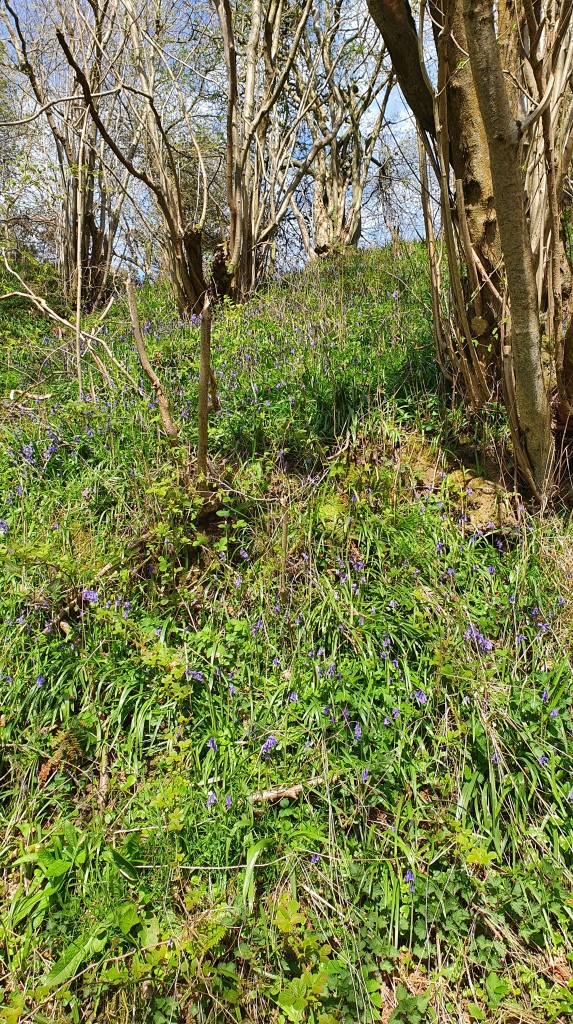
A filbert hedge with wild briar overtwined,
And clumps of woodbine taking the soft wind
Upon their summer thrones; there too should be
The frequent chequer of a youngling tree,
That with a score of light green brethren shoots
From the quaint mossiness of aged roots:
Round which is heard a spring-head of clear waters
Babbling so wildly of its lovely daughters
The spreading bluebells: it may happily mourn
That such fair clusters should be rudely torn
From their fresh beds, and scattered thoughtlessly
By infant hands, left on the path to die.
John Keats 1795-1821
A spring walk reveals change, change every day, the sudden appearance of the leaves on trees, the colours of the countryside, changing. Bright yellows and blues emerge, even the shades of green, so familiar seem more vibrant, the youthful vigour of grass reflected in the even more urgent call of the circling birds. what ever might be happening in the world,the inexorable progress of the seasons continues.
The bluebell, a wild harbinger of hope has, for generations been a signal of new life. The Language of Flowers, made popular by Charlotte de la Tour in ‘Le Langage des Fleurs’, published in 1818, describes, with a certain wistful glance back to earlier, simpler times the attributes that certain flowers bring. Some of these might alarm or bring about melancholy but not the bluebell, the bluebell is a sign and indicator of constancy. This delicate flower which emerges with it spring companions year upon year and carpets woodlands and hedgerows. So persistent in its desire to succeed this little gem can impinge itself where the gardener might not want it, but still it comes with its tiny blue bell shaped flowers hard to resist.
The bluebell has inspired art, colour, even perfume although it no perceptible fragrance of its own. Artists have drawn inspiration from the bluebell, perhaps because of its intense colour, a carpet of bluebells can literally shimmer from the forest floor as here in this wonderful evocation of spring.

This image of the painting Bluebells by sir Lawrence Alma-Tadema perfectly describes the woodland scene, the floor of the woodland carpeted in a haze of blue-purple bluebells.
Yet as suddenly as they appear, within weeks they will be gone once again, disappearing almost as suddenly as they came awaiting the return of spring once again. On a walk marvel once again at these beautiful marvels of nature and remember they signify constancy, they will always return to cheer and delight.

Aubade
Hark! Hark! the lark at heaven’s gate sings,
And Phoebus ‘gins arise,
His steeds to water at those springs
On chaliced flowers that lies;
And winking Mary-buds begin
To open their golden eyes:
With everything that pretty bin,
My sweet lady arise!
Arise,arise!
William Shakespeare, 1564-1616
You must be logged in to post a comment.